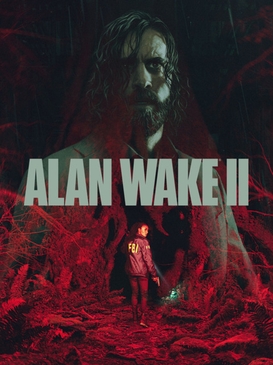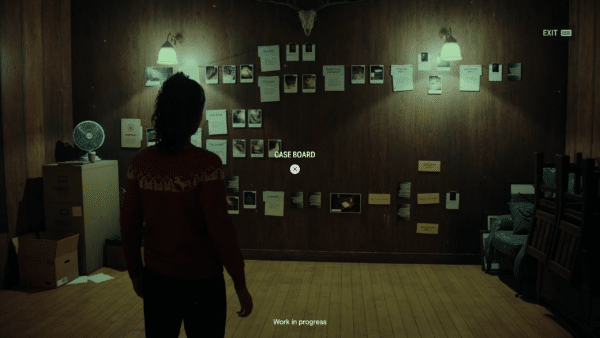Alan Wake 2 PC Review: A Nightmarish Masterpiece, But Can Your Rig Handle the Dark Place?

Alan Wake 2 is here, and it's a chilling return to Bright Falls that surpasses its predecessor in almost every way. Remedy Entertainment has crafted a truly terrifying and deeply engaging psychological horror experience, but it comes at a cost – a demanding one for PC gamers. This isn't just a game; it's a visual showcase pushing the boundaries of what's possible on PC. But does the gameplay and narrative live up to the hype, and can you actually play it? Let’s dive into the shadows and find out.
Gameplay: FMV - A Bold Experiment That Mostly Works
Alan Wake 2 pulls no punches, immediately throwing you into a complex narrative with two playable characters: Alan Wake himself, trapped in the nightmarish Dark Place, and Saga Anderson, an FBI agent investigating ritualistic murders in Bright Falls. Remedy's signature style is on full display, but the integration of live-action Full Motion Video (FMV) sequences is a particularly bold move.
The FMV sequences are used in a variety of ways, from Alan's surreal encounters with characters in the Dark Place to his increasingly bizarre attempts to rewrite reality. When done well, these sequences are incredibly effective, blurring the lines between reality and fiction and amplifying the game's psychological horror elements.
For example, there's a scene early on where Alan interacts with a talk show host in the Dark Place. The host is clearly not quite right, his movements jerky and unnatural, the lighting harsh and unforgiving. This FMV segment is unsettling and perfectly captures the warped reality Alan is trapped in.

However, the FMV isn't always a seamless fit. Some sequences feel a little disjointed, breaking the immersion rather than enhancing it. This is more apparent when the graphical fidelity of the FMV clashes with the in-game visuals. While Remedy has done a commendable job of blending the two, the uncanny valley rears its head occasionally.
Compared to other games that have used FMV, like Quantum Break (another Remedy title), Alan Wake 2's integration is more ambitious and generally more successful. Quantum Break often felt like a TV show clumsily glued to a video game; Alan Wake 2 strives for, and often achieves, a more cohesive experience. However, Contradiction: Spot The Liar! remains the gold standard for its seamless and reactive use of FMV within its low budget limitations.
Mechanics: The Case Board – A Detective's Delight or a Gimmick?
Saga Anderson's gameplay revolves around investigation, and central to this is the "Case Board." This mechanic allows you to pin evidence, connect clues, and profile suspects to piece together the mysteries surrounding the Bright Falls murders. It's essentially a visual representation of Saga's thought process.

In practice, the Case Board is a genuinely useful tool. It forces you to actively engage with the evidence you collect and think critically about the case. While the game does provide hints and guidance, it never outright tells you the solution, making you feel like a real detective. The game doesn't hold your hand, giving you a sense of agency in figuring things out. If you need to find evidence locations, it helps to pay attention to conversations and to look around very carefully.
Compared to the interrogation mechanics of LA Noire or the deduction system in Sherlock Holmes: Chapter One, the Case Board offers a different, more holistic approach. LA Noire focused on reading facial expressions and choosing the right questions; Sherlock Holmes emphasized observation and deduction. Alan Wake 2's Case Board is more about synthesizing information and forming a coherent narrative. The Case Board feels more organic and less like a series of mini-games.
That said, the Case Board isn't without its flaws. Sometimes, it can feel a little contrived, requiring you to jump through hoops to reach obvious conclusions. There are moments when the game seems to artificially gate progress by requiring you to fill out the Case Board even when the solution is already apparent. But overall, the Case Board is a welcome addition to the survival horror formula, adding a layer of depth and interactivity that sets Alan Wake 2 apart. If you need some Alan Wake 2 Case Board Tips and Tricks, be sure to watch some videos.
Graphics: Path Tracing – A Visual Revolution (If You Can Run It)
Alan Wake 2 is one of the first games to fully embrace path-traced global illumination, and the results are breathtaking. Path tracing simulates the way light behaves in the real world, creating incredibly realistic and nuanced lighting, shadows, and reflections.
The difference is immediately noticeable. Light bounces realistically off surfaces, shadows are soft and natural, and reflections are accurate and convincing. This technology dramatically enhances the game's atmosphere, making Bright Falls and the Dark Place feel more alive and immersive than ever before.

Imagine walking through the rain-slicked streets of Bright Falls at night. The flickering neon signs cast realistic reflections on the wet pavement, and the shadows of the trees dance in the wind. Or picture the eerie glow of the Dark Place, with light filtering through the dense fog and casting long, distorted shadows. These are the moments where path tracing truly shines, creating a sense of atmosphere and dread that simply wouldn't be possible with traditional lighting techniques. Does the Alan Wake 2 Path Tracing performance impact your system? Absolutely.
Performance: Taming the Beast on Mid-Range Hardware
Now, for the elephant in the room: performance. Alan Wake 2 is a demanding game, and path tracing pushes even high-end PCs to their limits. How does it run on a mid-range system like one equipped with an RTX 3060 or RX 6700 XT equivalent?
The short answer: it requires some tweaking.
To achieve a stable 60 FPS at 1080p on an RTX 3060 or RX 6700 XT, you'll need to make some compromises. Here are my recommended settings:
- Resolution: 1920x1080
- Overall Quality Preset: Medium
- Path Tracing: Off (unfortunately, this is the biggest performance hog)
- Global Illumination Quality: Low
- Texture Resolution: Medium
- Shadow Quality: Medium
- Effects Quality: Medium
- DLSS/FSR: Quality Mode
At 1440p, you'll likely need to drop the Overall Quality Preset to Low and potentially use a more aggressive DLSS/FSR setting (Balanced or Performance) to maintain a stable 60 FPS. Consider these Alan Wake 2 Best PC Visual Settings to optimize your build.
The biggest performance killers are undoubtedly path tracing and global illumination quality. Turning off path tracing is essential for playable frame rates on mid-range hardware. Even lowering global illumination quality from High to Low can provide a significant performance boost.
DLSS (for Nvidia cards) and FSR (for AMD cards) are viable upscaling options, but be aware that they can introduce visual artifacts, particularly at lower resolutions and more aggressive scaling settings. Experiment with different modes to find a balance between performance and image quality that you're comfortable with. However, you may encounter Alan Wake 2 blurry textures PC fix opportunities if you decide to use DLSS/FSR.
During my testing, I did observe some CPU bottlenecking on systems with older or less powerful CPUs. This was particularly noticeable in densely populated areas or during intense combat sequences. If you're experiencing stuttering or frame drops, even with the settings mentioned above, your CPU may be the culprit.
Overall Experience: A Triumph of Psychological Horror

Alan Wake 2 is a masterful blend of psychological horror, narrative complexity, and innovative gameplay. Remedy has successfully built upon the foundations of the original Alan Wake and Control, creating a truly unique and unforgettable experience. The game is more accessible than Remedy's prior works, but the story is dense, and it rewards those who have played other Remedy titles, which makes it an experience for fans.
It's not without its flaws – the performance can be demanding, and the FMV integration isn't always perfect. But the strengths of the game far outweigh its weaknesses. The story is gripping, the characters are compelling, and the atmosphere is thick with dread. If you have a PC that can handle it, Alan Wake 2 is an absolute must-play.
Ultimately, Alan Wake 2 is a worthwhile experience for fans of Remedy's prior works and newcomers alike. It’s best suited for players who appreciate a slow-burn, story-driven experience with a focus on atmosphere and psychological horror. Just be prepared to tweak those settings and maybe upgrade your rig if you want to experience the game at its full visual potential. This may cause a few Alan Wake 2 PC stuttering fix scenarios to arise. So, is Alan Wake 2 path tracing worth it? If your system can handle it, absolutely!
Disclaimer: Performance results may vary depending on individual system configurations. All tests were conducted using the latest drivers and game patches available at the time of writing.